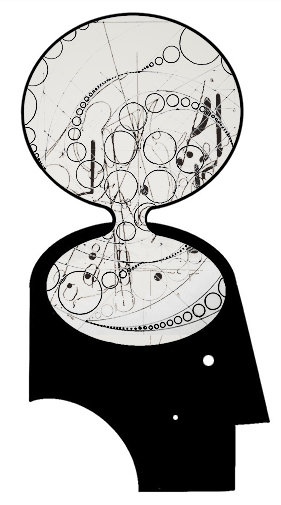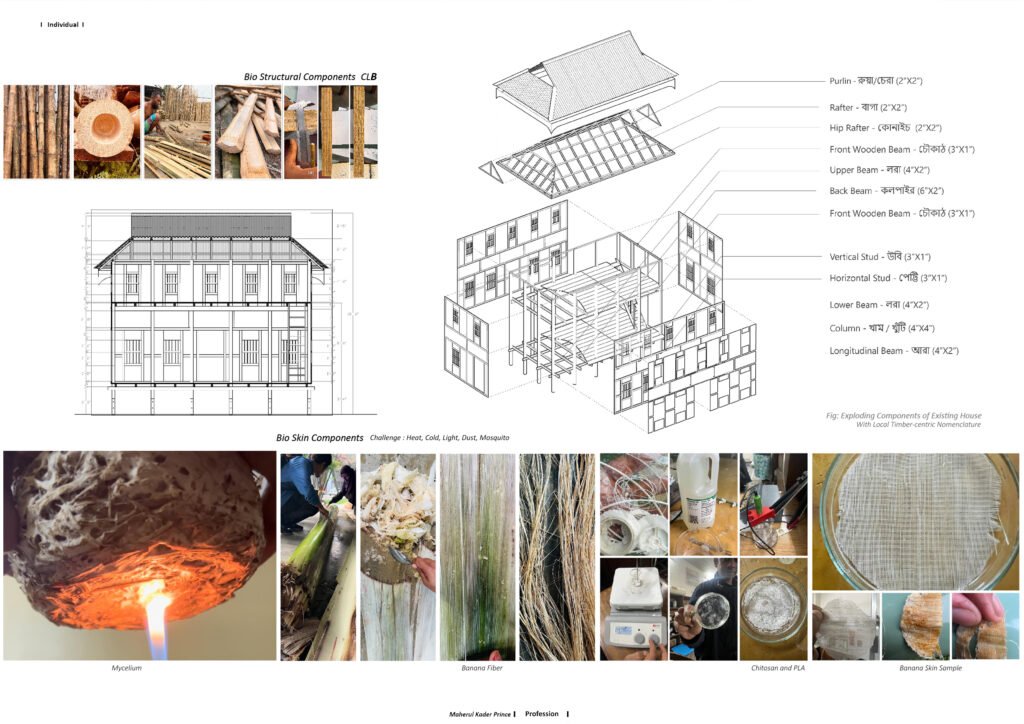Bengal Bio-Lego
A Circular, Low-Carbon Future Rooted in Heritage
Bengal Bio-Lego redefines rural construction by integrating Cross-Laminated Bamboo (CLB), matured Coconut and Betel Nut Trees, and bio-based skin materials into a modular, parametric system. Drawing from Bangladesh’s rich timber-centric nomenclature for “Purlin,” “Rafters,” “Beam,” “Column,” “Stud”—this approach preserves vernacular traditions while advancing sustainable innovation.
In rural Bangladesh, traditional timber houses, refined through centuries of experimentation, have long been central to local architecture. These timber-framed dwellings are characterized by structural components such as posts (‘Khuti’), horizontal beams (‘Choukath’), end beams (‘Kachpair’ and ‘Kolpair’/’Kodla’), sills (‘Peti’), lintels (‘Choukath’), internal beams (‘Ara’), purlins (‘Chera’), jack rafters (‘Rua’/’Madaam’), and hip rafters (‘Konaich’), forming the essential framework of these vernacular structures. Bengal Bio-Lego builds on this legacy, modernizing it through sustainable materials and parametric precision.
At its core, structural Lego blocks utilize 3-4-year-old bamboo, matured coconut, and betel nut trees—naturally harvested at the end of their lifecycle. Skin Lego panels incorporate bamboo fiber, banana fiber, and coconut fiber blended with PLA and chitosan, ensuring biodegradability. Additionally, mycelium-based components infused with agricultural waste harness Bangladesh’s agrarian abundance, fostering circular, low-carbon construction.
Designed through Karamba 3D-driven parametric analysis, Bengal Bio-Lego ensures precision, adaptability, and resilience, merging biomaterials with local craftsmanship. By embracing heritage-driven innovation, it offers biodegradable, renewable alternatives that preserve structural integrity, cultural continuity, and environmental harmony—paving the way for a sustainable rural future.

Bio Structure Lego (Cross Laminated Bamboo, Matured Areca Nut and Coconut Tree )




